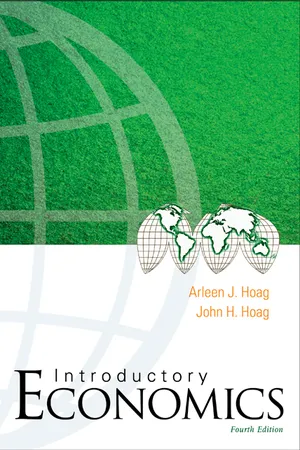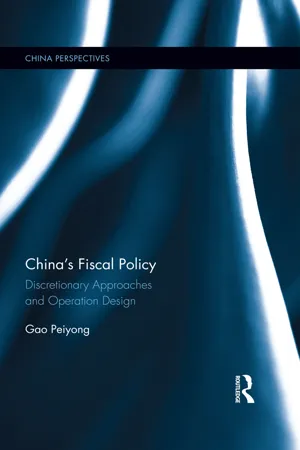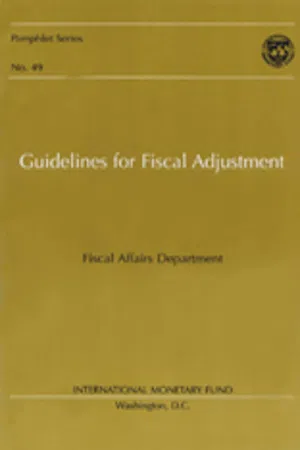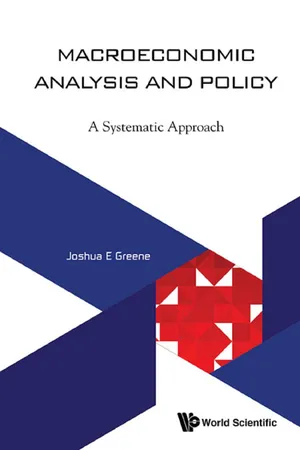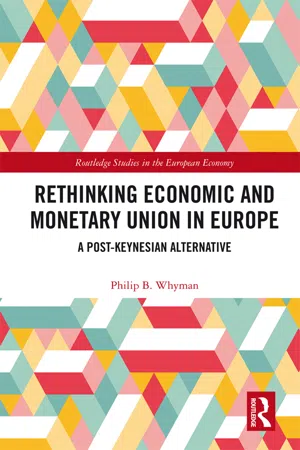Economics
Fiscal Expansion
Fiscal expansion refers to the government's use of increased spending and/or reduced taxes to stimulate economic growth and boost aggregate demand. This policy is often employed during economic downturns to counteract recessionary pressures and promote employment and investment. By injecting more money into the economy, fiscal expansion aims to stimulate consumer and business activity, ultimately supporting overall economic recovery.
Written by Perlego with AI-assistance
Related key terms
9 Key excerpts on "Fiscal Expansion"
- eBook - ePub
Fiscal Space
Policy Options for Financing Human Development
- Rathin Roy(Author)
- 2012(Publication Date)
- Routledge(Publisher)
5 Understanding Fiscal Expansions 1 Francisco Rodríguez I NTRODUCTION Suppose that a given country decides to increase government expenditures by more than 10 per cent in a given year. Suppose also that this increase is not a simple consequence of increasing per capita GDP, but was rather a result of an increasing participation of the public sector in the economy. What would you expect the long-run consequences of a Fiscal Expansion of this type to be? Most economists would argue that, if such a Fiscal Expansion is not accompanied by a permanent increase in revenues, it would appear reckless and is unlikely to be sustained. Even if the expansion is financed by a temporary boom in incomes, coming, say, from an increase in resource rents or deficit financing, it is likely to collapse as soon as the source of revenue dries up. The reason is simple. An increase in spending without a consequent increase in revenues implies a long-run increase in the fiscal deficit, and high permanent fiscal deficits are, commonly, not sustainable. Even if the increase is accompanied by increases in tax revenues, or other apparently permanent sources of revenues, deep questions would remain about the long-run political sustainability of sudden and drastic tax increases of the magnitude necessary to sustain such Fiscal Expansions. An alternative answer, however, can be given to this question based on equally solid economic theory. Whether any increase in expenditures is sustainable or not in the long run should depend on the uses to which the additional expenditure is put. If Fiscal Expansions are used to finance investment with high social returns, it could be argued that there is no reason for the Fiscal Expansion to be unsustainable because the expan sion itself will be paid for by the revenue increase resulting from the payoff to these investments - Available until 20 Jul |Learn more
Contemporary Economics
An Applications Approach
- Robert Carbaugh(Author)
- 2016(Publication Date)
- Routledge(Publisher)
Most postwar recessions in the United States have been short, lasting just under 11 months on average. By the time a fiscal program begins to boost business and consumer demand—that is, once policymakers recognize that economic growth has slowed, propose a fiscal package, debate it, pass it, and send it to the president for his signature—the economy is already likely to be recovering. For this reason, discretionary fiscal policy in the United Sates is generally viewed as too unwieldy for dealing with the typical, mild recessions experienced in recent decades.For example, evidence appeared in late 2000 that the U.S. economy was slowing. Congress did pass a tax cut in 2001, but this had been part of President George W. Bush’s legislative agenda before any hint of an economic slowdown. It took Congress until March 2002 to pass the Economic Recovery Act to provide further stimulus to the economy. Simply put, many economists are skeptical of fiscal policy as a stabilization tool, particularly through the mechanism of tax cuts. Because of lags in decision making and administrative lags in getting tax cuts to individuals, a fiscal stimulus enacted through a tax cut can be poorly timed.Crowding-Out Effect
Another potential problem of expansionary fiscal policies is the crowding-out effect. With crowding out, private spending (consumption spending or investment) falls as a result of increased government expenditures and the subsequent budget deficits. The source of the decline in private spending is higher interest rates generated by budget deficits.For example, suppose that the government enacts an expansionary fiscal policy—say, an increase in defense spending. The policy must be financed either by increased taxes or by borrowing funds to finance the enlarged federal deficit. If the government borrows funds to finance the deficit, the total demand for funds will increase as the government competes with the private sector to borrow the available supply of funds. The additional government borrowing thus increases the demand for funds and pushes up interest rates. Because of higher interest rates, businesses will delay or cancel purchases of machinery and equipment, residential housing construction will be postponed, and consumers will refrain from buying interest-sensitive goods, such as major appliances and automobiles. Therefore, the higher interest rates caused by government borrowing squeeze out private-sector borrowing. Thus, crowding out lessens the effectiveness of an expansionary fiscal policy. - eBook - ePub
- Arleen J Hoag, John H Hoag(Authors)
- 2006(Publication Date)
- WSPC(Publisher)
Fiscal policy is one form of stabilization policy. Fiscal policy involves changes in the size of government spending and tax collections. Either of these changes alters the government budget. Fiscal policy is the use of the federal budget as an economic tool to stabilize the economy. Who administers fiscal policy? Fiscal policy is administered by the president and Congress. These administrative and legislative branches of the government determine the federal budget. There are two sides to the federal budget. First is the inflow, which is tax collections. Second is the outflow, which is government spending. We conclude that fiscal policy involves the ability of the government to tax and to spend, and thus use the federal budget to affect aggregate demand, and hence GDP. How Fiscal Policy Works We saw in Chapter 23 that a change in either government spending, G, or taxation, T, changes the level of aggregate demand. Aggregate demand increases with an increase in government expenditure and falls with an increase in taxes. We now have two tools, spending and taxation, that can be applied to either unemployment or inflation. What if the economy is performing at a low level of income, and the result is unacceptable amounts of unemployment? Government could apply the appropriate adjustments to spending and taxation and increase aggregate demand, C +1 + G at each price level, to the desired amount. By raising G, C + I + G would rise and so would income, Y, since Y = C + I + G. Thus an increase in government spending increases aggregate demand, and the equilibrium level of income. Or, as an alternative to an increase in government spending, taxes could be reduced. This would leave more spending power in the hands of consumers and/or business and increase aggregate demand. Or, an increase in spending and a reduction in taxes could be combined. These are expansionary fiscal policies, intended to increase the level of income - eBook - ePub
China's Fiscal Policy
Discretionary Approaches and Operation Design
- Gao Peiyong(Author)
- 2017(Publication Date)
- Routledge(Publisher)
3 or 18 percent of GDP from 7.93 percent in 1997. With more treasury bonds issued and fiscal expenditure expanded, economic growth relies more on fiscal expenditure expansion, which, to some extent, even evolves into a constant of economic growth. If fast accumulation of national debts and the dependence of economic growth on fiscal expenditure expansion are viewed as the cost of the proactive fiscal policy implemented in the last five years, pursuing more benefits and attempting to digest the current cost after weighing the cost against the benefits will be a significant and inevitable theme when we continue to implement proactive fiscal policy for the purpose of potential risk prevention.Third, the macroeconomic principles indicate that the stimulation or the pull of fiscal expenditure expansion to the economic growth, even just the direct push on economic aggregate by external fuels, is on the decline. To sustain the original stimulation or pull, fiscal expenditure has to keep expanding on its previous scale; while to enhance the original stimulation or pull, fiscal expenditure has to expand on a larger scale. When a proactive fiscal policy has been implemented for five consecutive years, sustaining the original scales of extra treasury bond issuance and fiscal expenditure expansion will not be as effective as before, even though the so-called fading-out strategy is not applied. To follow the operation mode in the last five years and keep that stimulation or pull, it has to increase the dosage – issuing more treasury bonds and further expanding fiscal expenditure. In that case, it would increase the potential risks of fiscal mechanisms, even overall economic and social risks, not to mention the sustainability of fiscal balance.Fourth, compared with the last five years, especially in 1998 when proactive fiscal policy was first implemented, today’s macroeconomy has already gone throughtremendous changes. Insufficient demand and economic downturn are still our principal contradictions, and the momentum effect of deflation still works, but we are on the rise from the bottom. With global economic upturn, China’s national economy will – if not, surprisingly – be expected to transition from recession to blossoming at the end of this year or the early part of next year, unless unexpected incidents occur. Providing solid evidence are positive CPI growth and economy growth rate up to 9.9 percent in this first quarter, even 8.9 percent in this April when SARS raged. Therefore, keeping anti-deflation while preventing inflation, expanding domestic demand while fading out, should be the unique feature that distinguishes the proactive fiscal policy to be further implemented from what it was like in the last five years. - eBook - ePub
- Jeffrey Davis(Author)
- 1995(Publication Date)
- INTERNATIONAL MONETARY FUND(Publisher)
To the extent that the government is a major source of dissaving in the economy (that is, its consumption exceeds its current revenue), it may have an adverse impact on growth. This would be particularly likely if the consumption is unrelated to the production of human capital and/or the maintenance of physical infrastructure. Less obviously, the government’s taxing and spending decisions may change the way resources are used in the economy in a way that is detrimental to growth. An example of such effects would be taxation policies with adverse supply-side effects, such as exemptions or special tax rates that encourage investment in projects with low (or even negative) returns. Similarly, excessive marginal income tax rates may reduce the incentives for saving and high payroll tax rates may deter employment creation. The costs of such policies can be high.Especially at times of economic recession, expansionary policies may increase output in the short run. The scope for expansionary fiscal policies in these circumstances is liable to be greatest in countries that had previously adopted conservative fiscal strategies. However, capacity constraints, a low responsiveness of domestic supply, and the inability to sustain an adverse balance of payments position are likely to limit the positive effects of demand expansion on output in most countries. Indeed, it is likely that overly expansionary fiscal policies may lead to increased distortions in the economy and, ultimately, a reduction in growth (see Box 1 ). For some countries, Fiscal Expansion could well prove contractionary even in the short run because financial market participants quickly raise interest rates in response to the expected higher rate of inflation and the prospect of financial instability.Fiscal Adjustment to Ensure Sustainability
An important responsibility of economic policymakers is to ensure the longer-term viability of a noninflationary growth path for the economy. Governments may promote high growth in the short term, while sowing the seeds of future difficulties in terms of an unsustainable growth in public debt or the creation of an unfinanceable future external position. Thus, fiscal consolidation initiatives may be necessary in the short term to prevent the occurrence of an unsustainable fiscal position in the future. These issues may be considered in relation to the current account, government debt, and the impact of unfunded liabilities arising from current fiscal policies.•Current account - eBook - ePub
- (Author)
- 2023(Publication Date)
- Wiley(Publisher)
contractionary fiscal policy ).Hence, a key concept is the budget surplus or deficit, which is the positive or negative difference between government revenue and expenditure for a fixed period of time, such as a fiscal or calendar year. Government revenue includes tax revenues net of transfer payments; government spending includes interest payments on the government debt. Analysts often focus on changes in the budget surplus or deficit from year to year as indicators of whether the fiscal policy is getting tighter or looser. An increase in a budget surplus would be associated with contractionary fiscal policy, while a rise in a deficit is an expansionary fiscal policy. Of course, over the course of a business cycle, the budget surplus will vary automatically in a countercyclical way. For example, as an economy slows and unemployment rises, government spending on social insurance and unemployment benefits will also rise and add to aggregate demand. This is known as an automatic stabilizer . Similarly, if boom conditions ensue and employment and incomes are high, then progressive income and profit taxes are rising and also act as automatic stabilizers increasing budget surplus or reducing budget deficit. The great advantage of automatic stabilizers is that they are automatic and do not require the identification of shocks to which policy makers must consider a response. By reducing the responsiveness of the economy to shocks, these automatic stabilizers reduce output fluctuations. Automatic stabilizers should be distinguished from discretionary fiscal policies, such as changes in government spending or tax rates, which are actively used to stabilize aggregate demand. If government spending and revenues are equal, then the budget is balanced - eBook - ePub
Macroeconomic Analysis and Policy
A Systematic Approach
- Joshua E Greene(Author)
- 2017(Publication Date)
- WSPC(Publisher)
In times of large deficits, rising public debt, and lack of confidence, the fiscal multiplier can be small or even negative, by creating expectations of future tax increases. If the macroeconomic situation is sufficiently precarious, expansionary fiscal policy can lead to a sharp fall in activity by creating expectations of a fiscal or macroeconomic crisis. In these circumstances, fiscal stimulus can prove counterproductive. Developing countries offer many examples of this situation, a recent one being the adverse consequences of expanding the deficit by raising energy subsidies in Pakistan during 2008.When fiscal policy is unsustainable, fiscal contraction may prove expansionary. The main examples of so-called “expansionary contraction” in advanced economies involved countries with high debt/GDP ratios and relatively high tax burdens, such as Denmark and Ireland in the 1980s. In these countries, cuts in spending that reduced budget deficits, accompanied by exchange rate depreciation, helped boost economic activity. Indeed, Ireland’s reforms unleashed a wave of economic growth that dramatically raised per capita incomes from the late 1980s until 2008, when a banking crisis engulfed the economy. In developing and emerging market countries, fiscal contraction has often been the key to reducing current account deficits and restoring a viable balance of payments. Thus, macroeconomic stability has a critical bearing on the effectiveness of fiscal policy in stimulating economic activity.C. Pro-Cyclical vs. Counter-Cyclical Fiscal Policy
The impact of fiscal policy on aggregate demand means that fiscal policy can play an important role in stabilizing macroeconomic activity by expanding policy (cutting taxes and raising expenditures) when the economy is in recession or below potential output and tightening policy (raising revenues and reducing expenditures) when economic activity exceeds potential output and inflation begins to accelerate. In most economies, revenues follow a natural counter-cyclical pattern, rising more than proportionately when the economy expands and falling significantly when it contracts, because of progressive income and profits taxes and the tendency for corporate profits to rise (and fall) even faster than changes in economic activity. In many advanced economies, programs such as unemployment insurance, disability pensions, and special benefits for the poor make expenditures follow a similar pattern, as outlays for these programs expand during slowdowns and contract as the economy recovers. Thus, fiscal policy tends to be counter-cyclical in these economies, unless overwhelmed by legislated tax cuts and spending increases when economic activity is buoyant. - eBook - ePub
Bangladesh's Macroeconomic Policy
Trends, Determinants and Impact
- Monzur Hossain, Monzur Hossain(Authors)
- 2020(Publication Date)
- Palgrave Macmillan(Publisher)
There are two contrasting economic schools of thought regarding the role of fiscal policy in economic development: one asserts that different forms of government spending on social as well as physical infrastructures have positive effect on economic development, while the other school of thought highlights that government regulations and taxation create distortions in the market. The debate between these two views has been fueled by mixed empirical evidence offered by different studies on the relationship between public expenditure and economic growth. That expansionary fiscal policy is a useful tool to stimulate economic activities, which was first argued by Keynes in his 1936 book The General Theory of Employment, Interest and Money. Keynes argued that national output increases as a consequence of an increase in the government spending, while Wagner’s Law (Wagner 1883) states that the size of the government expenditure increases with economic growth. A number of literatures shed light on these two schools of thoughts. With the upsurge of endogenous growth theories, there has been a number of empirical studies looking into the long-run growth effects of fiscal variables. Endogenous growth theories offer the framework for exploring effectiveness of fiscal policy in stimulating growth and expect that public spending and taxation have both short-run and long-run impacts on growth. Barro and Sala-I-Martin (1992) discussed the effects of fiscal policy in a variety of endogenous growth models. Barro (1990) found a negative relationship between the share of government spending in GDP and economic growth - eBook - ePub
Rethinking Economic and Monetary Union in Europe
A Post-Keynesian Alternative
- Philip B. Whyman(Author)
- 2018(Publication Date)
- Routledge(Publisher)
effects upon the real economy rather than the maintenance of any arbitrary accounting rule on balanced budgets or ‘sound finance’ (Lerner, 1943: 469). If the focus of government is to ensure a sufficient level of aggregate demand capable of facilitating full employment, then fiscal policy should be designed to assist this process. Public expenditure is therefore utilised primarily as a macroeconomic policy instrument designed to ensure a sufficient level of aggregate demand, and additional taxation is imposed on those occasions when it is necessary to reduce disposable income and hence consumption, to prevent inflationary pressures.In the real world, where Say’s Law does not hold, there is no certainty that ex ante savings will necessarily equal ex ante investment, and therefore there is no automatic tendency of the economy to move quickly and seamlessly towards full employment. Consequently, there is a clear justification for fiscal policy to close this gap (Keynes, 1936; Kalecki, 1939). If aggregate savings exceed investment, then Fiscal Expansion should be forthcoming to close the gap and prevent a period of economic slowdown. Similarly, if aggregate investment exceeds savings, then a fiscal surplus should be run to prevent inflationary overheating (Arestis and Sawyer, 2004a: 68). Thus, discretionary fiscal policy, reinforced by automatic stabilisers, can help to smooth short-term fluctuations in economic activity and underpin the desired level of output and employment over the longer term (Arestis and Sawyer, 2013: 145–146). This Keynesian approach to fiscal policy was termed ‘functional finance’ by Lerner (1943).One problem with this approach which may arise, given that Keynesians typically anticipate that ex ante savings are more likely to exceed investment rather than vice versa, concerns the possibility that functional finance may result in rising cumulative budget deficits and public debt. This was recognised as a possibility by the originators of the approach. However, they remained relatively unconcerned. Lerner (1943: 475–476) noted that, if public debt were financed from within the nation, then this would merely imply the distributional transfer of resources within society. Moreover, since fiscal deficits would only be required if aggregate savings exceeded investment, then there would, by definition, be sufficient surplus savings available to finance any budget deficit – quod erat demonstrandum
Learn about this page
Index pages curate the most relevant extracts from our library of academic textbooks. They’ve been created using an in-house natural language model (NLM), each adding context and meaning to key research topics.


